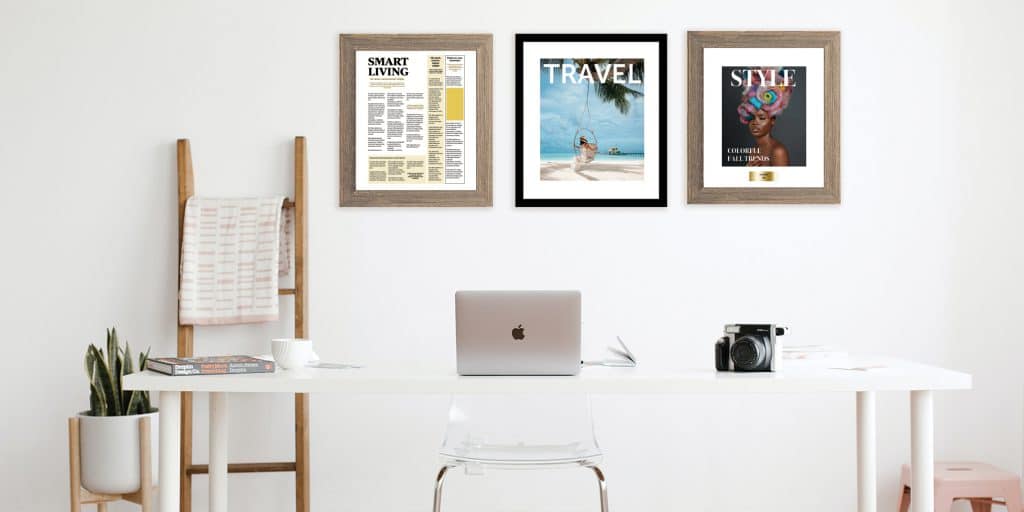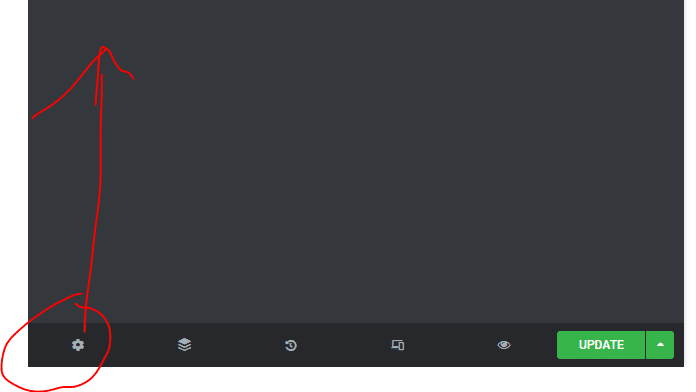
Wondering how to start a student newspaper or magazine publication? If your school doesn’t already have its own newspaper, taking the initiative to launch one is a tremendous opportunity to get involved and enrich not only your college experience but that of your peers as well. With that said, there’s much to do in the beginning stages, and figuring out how to make a school publication get off the ground can feel impossible. Fortunately, this guide outlines some essential steps to take to ensure your startup is a success.
1.) Double-Check Your Club Directory
Explore the clubs already in existence at your college. Though there might be no newspaper yet, there may be an adjacent publication that might be willing to lend a helping hand and fill you in on how to start a journalism club at school. You might find an on-campus literary and arts magazine, or some other niche publication, such as a feminist news journal. By joining forces with an established club, you can gain valuable logistical support and ease the growing pains of learning how to run a school newspaper from scratch.

2.) Determine Your Editorial Needs
Depending on the size of your school, there may be a member quota you must meet before the administration will agree to recognize you as a club. Even if there isn’t, assembling a dependable staff is essential to keeping the publication running. Some nonnegotiable positions include the editor, a lineup of writers, one or two photographers, and a layout and graphic design artist.
Editors
The editor in chief serves as the final checkpoint, authorizing what goes into the paper and where. If the staff is sizable enough, there may also be room for a managing editor who reports to the editor in chief and oversees the reporters and subeditors, also known as copy editors, as well as fact-checkers and proofreaders. The subeditor will assume the responsibility of reviewing and approving all copy prior to publication, thus allowing the EiC to focus on more executive editorial duties and staff oversight.
Writers
Besides the editors, a bevy of writers and reporters will comprise the lifeblood of the publication. Regardless of the size of the operation, a university publication will want at least two writers so that the workload can be shuffled evenly. A typical eight-page newspaper will carry one article of roughly 1000 words per page.
Photographers
A newspaper or magazine article is not complete without accompanying visuals. Having at least one photographer to snap and supply this element of visual intrigue to the publication will go a long way in boosting its readability and newsstand appeal. The photographer will attend various school functions and snap photos specifically for the assigned piece. Seeing as these images will be published and distributed, being mindful of your school’s privacy laws is wise. Some students may not want their picture in the newspaper, so you may need to obtain an image release form first.
Graphic Designers
All the content your writers and photographers create will have to be arranged by a layout and graphic design artist. This person will also create the artwork and logos that go into each edition.
3.) Build Your Team
For each position you’re looking to fill, send out an advertisement asking for applications. You can use a variety of strategies, such as word of mouth, posters, and social media posts to spread the word. Share a job description outlining each role’s tasks and responsibilities, as well as the key skills that will be necessary. Just as you would for an actual job, schedule and conduct interviews with promising applicants.
When building a team, bear the future of the publication in mind. Rather than viewing the project as a novelty, think about it as a long-term investment and consider measures you can take to maintain a staff in the years to come. At the end of each year, some students will graduate and leave, so plan for their replacements by recruiting new talent to shadow key players while you still have them around. Once you’ve compiled a solid team, set up an inaugural meeting where everybody can meet and discuss their goals, overarching vision, and generate school newspaper ideas.
4.) Register Your College Club
Once you’ve hit your quota, you can petition your student activities office to start a new club. Take care to time your proceedings wisely–some colleges’ governing boards only accept applications at the beginning of the semester (usually September and January).
5.) Secure Funding
Once you’ve gotten the go-ahead from your administration, you will need to coordinate a budget for the publication. Running a newspaper or magazine is not cheap, and you’re likely to rack up an invoice in the beginning when you’re still working out the kinks. Fortunately, there are many ways you can raise funds to finance the endeavor. Many colleges have a budget allocated for club projects and might even have a budget specifically reserved for journalism. If not, speaking to your college’s student engagement office about your projected financial needs may secure you some support. Sometimes, a new club will be asked to submit a written constitution to the SGA’s finance committee. If penning a constitution sounds too daunting a barrier to entry, don’t fret. It’s likely your college will have a template you can use as a starting point if this is a requirement.
If dipping into the school budget is not an option, don’t throw in the towel just yet. You can also seek funding externally by applying for journalism grants—a simple Google search will yield dozens of such opportunities!

6.) Decide on a Timeline
Before crafting your first edition, drafting up a print calendar will be necessary so that you can gauge the scope of what each issue will need to cover. Most schools begin by printing twice a semester, which equates to four times an academic year. As your budget and staff grow, you can aim to publish more frequently, such as once a month, for roughly nine issues a year.
7.) Pick a Format: Print, Digital, or Both?
The question of whether to run a hard-copy paper, a digital paper, or a combination of the two comes next. From a financial standpoint, opting for a hybrid format will enable you to publish more issues per semester. For instance, leveraging a weekly online edition with a handful of print issues throughout the semester will keep the content flowing in a timely manner while also cutting the costs that come with such frequent printing.
In an increasingly eco-conscious world, the option to forgo printing and publish entirely online also has many appeals. If it’s possible to take over a blog page on your school website, the stress of printing–and having to produce all your material in one go–disappears completely. Hosting online will also allow you to stagger your content throughout the week, which will make room for more deadline flexibility and timely reporting.
At the end of the day, the decision will come down to a combination of personal preference and practical factors, such as the cost of software, equipment, shipping, ink, and paper. If you do choose to print, opting for newsprint in lieu of glossy and other expensive paper grades will be the most cost-efficient. If you’re undecided, you can request samples from most print shops to compare before making your selection.

8.) Determine Length & Print Volume
Knowing how many pages each publication will have will also be necessary when figuring out both printing details and editorial concerns. If you opt for a hard-copy format, you will need to build your publication to print in multiples of four. With that squared away, you will need to decide how many total copies you want to print. Typically, 20% of your student population is a good starting point.
9.) Select a Design Software
Some popular choices include InDesign, Canva, Sketch, and Photoshop. Ideally, your graphic design artist will have some preexisting know-how in this department and can steer the ship. Otherwise, consult with your college library for some tips on where to begin.

10.) Brainstorm Content
Generally, the purpose of a student-created newspaper or magazine is to keep the school community informed about on-campus events, lend insight on issues, and provide a platform for students to amplify their voices and share opinions. Rather than having one person’s vision dominate, strive to make the scope of the newspaper a collaborative decision. If a staff member belongs to another club, see whether they have an in on potential material. By covering a diverse array of topics in the college community, you can widen your audience and readership.
Much in the same way that a national newspaper reports on news from around the country, a school newspaper should report on news from around the campus. By modeling the paper after a regional publication, you can tune out the noise of the infinite possibilities that publishing presents and instead focus on covering news of relevance to your school and, by extension, your readers.
A college campus is like a little world, so from sports to school elections, there will be no shortage of fodder to report on. Of course, you can make exceptions and occasionally feature bigger stories that are of particular interest to your pupils or that the staff feels strongly about, but taking care to tie it back to life on campus will keep the paper’s focus cohesive. Publications are traditionally divided into themed sections for order and ease of navigation. For example, organizing a newspaper into spots (e.g., special events, arts, sports, opinions, news, etc.) might be a useful way to structure your content.

11.) Source Content
Once you have a team of writers and photographers, you can begin assigning these articles. The clearer a vision you have of your expectations, the better. Setting deadlines for both rough drafts and the final version, as well as word count limits, will ensure they apply their time wisely and can meet your expectations accordingly.
While the writers and photographers are busy, the layout and graphic designer can begin building the bones of the publication so that everything is ready to format once the actual material comes in.

12.) Distribute the Final Product
Now comes the fun part–with the final product in hand, you can finally share the fruits of your labor! Whether you’re publishing online or in print, promoting the inaugural edition on social media is a sure way to draw in readers. Maintaining a strong social media presence throughout the publishing year to announce each new edition. As each edition rolls out, take care to measure reader numbers and send out surveys to evaluate what does and doesn’t work so that you can make appropriate changes and develop as a publication. A successful newspaper will evolve to meet the changing needs and wants of its audience.
After you officially publish your first edition, take time to be proud of your huge accomplishment! Keep one hard copy for school records and your own memorabilia, and make sure to keep it safe and well-displayed in a custom Church Hill Classics frame!









